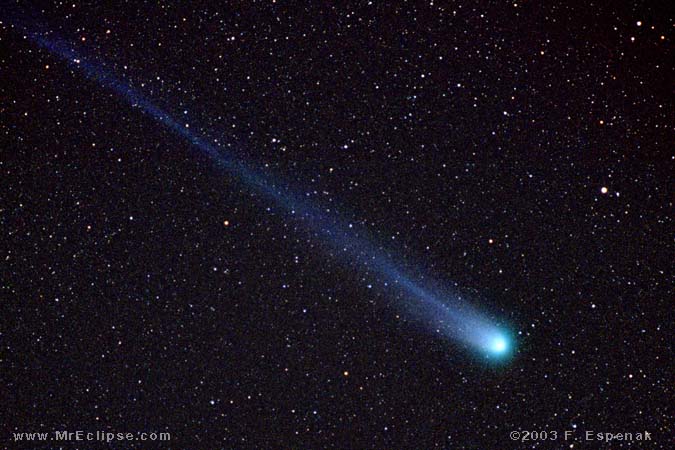Comet Hyakutake - 7
Comet Hyakutake (formally designated C/1996 B2) made one of the closest passes to Earth of any comet in the past two centuries. Nicknamed The Great Comet of 1996, Hyakutake was a bright naked eye comet that was seen by millions of people worldwide.
The comet was discovered by a Japanese amateur astronomer on 1996 January 31. At the time, the comet had a brightness of magnitude 11 (requiring a telescope to be seen) and was located approximately 2 astronomical units (AUs) from the Sun. When astronomers calculated its orbit, they quickly realized that Hyakutake would pass about 0.1 AUs from Earth on March 25, less than 2 months after discovery. Due to its close pasage to Earth, Hakutake became bright enough to seen with the unaided eye, even from within big cities. But more remarkably, the comet developed an enormous tail that extended nearly half way across the sky (about 80° in length).
During its closest approach on March 25, the comet glowed at magnitude 0 as it raced across the sky with an apparent motion of about 1° per hour (twice the Full Moon's diameter).Hakutake's coma then appeared nearly overhead at mid-northern latitudes and was approximately 2° in diameter (four times the Full Moon's diameter)
For more information, see Comet Hyakutake (Wikipedia).
Technical Details
- Object: Comet Hyakutake - 7
- Date/Time: 1996 March 25 ~20:00 EST
- Location: Dunkirk, Maryland
- Mount: Bogen 3001 Tripod
- Lens: Nikkor AI 50mm f/1.8
- Camera: Nikon FE 35mm SLR
- Film: Kodak Ektachrome 400
- File Name: HY96-219w.jpg
- Rights: Copyright 1996 by Fred Espenak. All Rights Reserved. See: Image Licensing.
